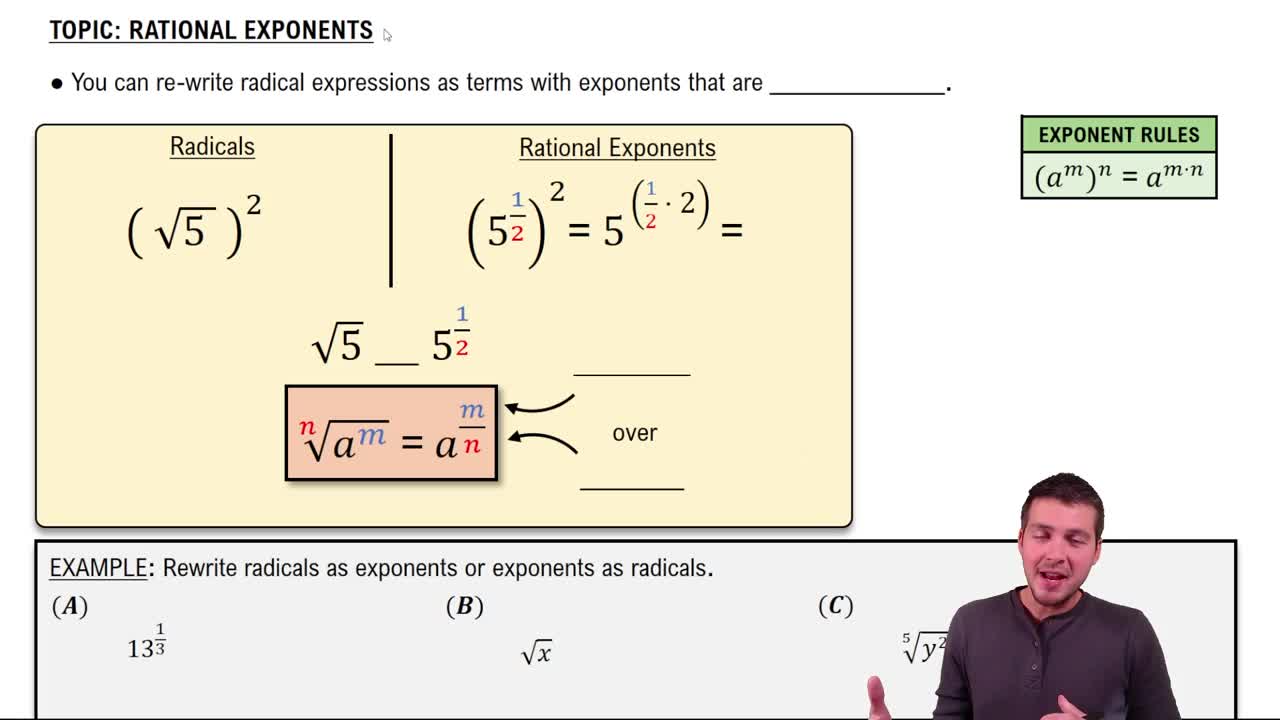Here are the essential concepts you must grasp in order to answer the question correctly.
Properties of Exponents
The properties of exponents are rules that govern how to manipulate expressions involving powers. One key property is that when multiplying two expressions with the same base, you add their exponents. For example, a^m * a^n = a^(m+n). This principle is essential for simplifying expressions like (y^2)(y^5).
Recommended video:
Simplifying Expressions
Simplifying expressions involves reducing them to their most basic form while maintaining equality. This process often includes combining like terms and applying the properties of exponents. In the case of (y^2)(y^5), simplifying requires using the exponent addition rule to find the correct exponent for y.
Recommended video:
Simplifying Algebraic Expressions
True or False Statements in Algebra
In algebra, determining whether a statement is true or false often involves verifying the equality of both sides of an equation. If the two sides do not match, the statement is false, and one must identify the correct form. For the equation (y^2)(y^5) = y^7, checking the left side against the right side reveals whether the statement holds true.
Recommended video:
Introduction to Algebraic Expressions



